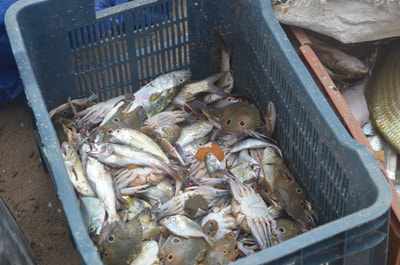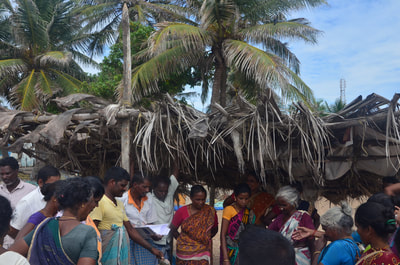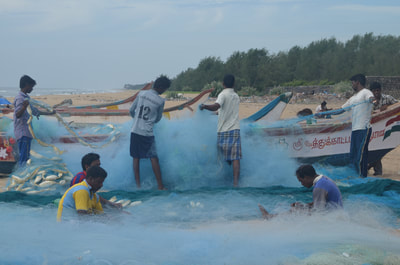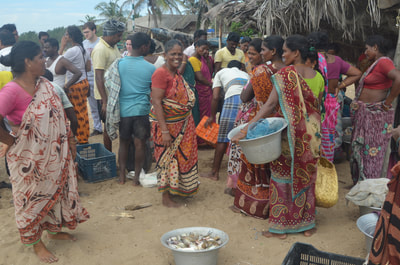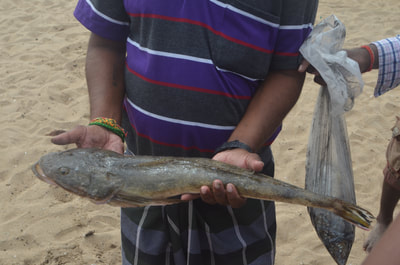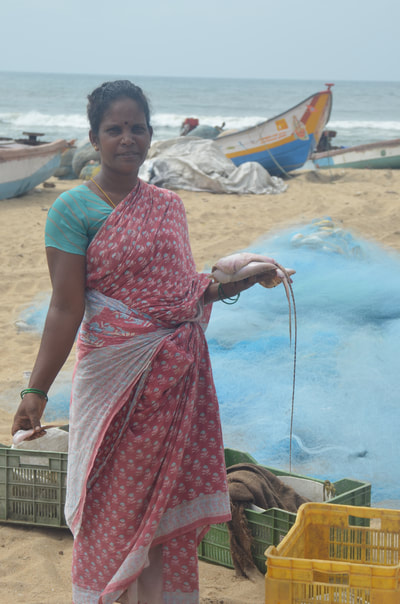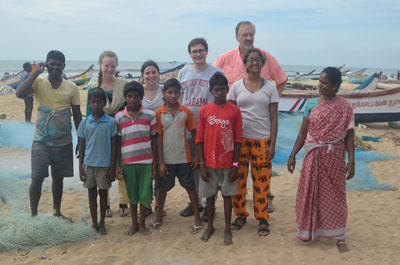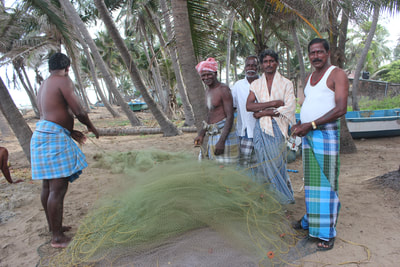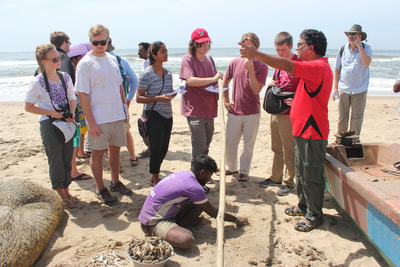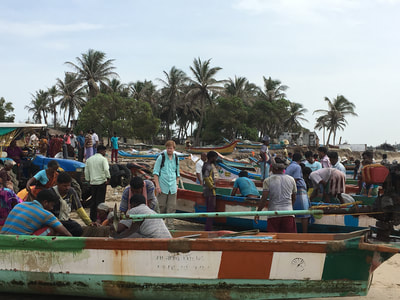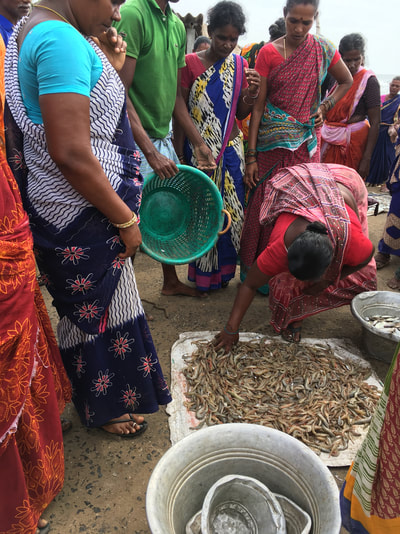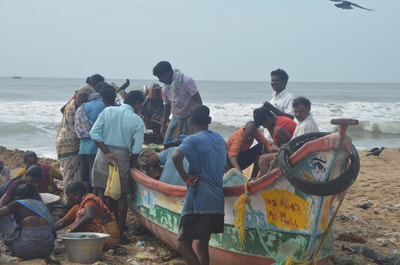Fishing
2015
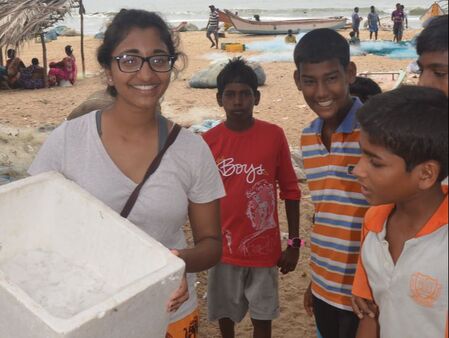
The fishing group initially wanted to tackle the problem that the farmers were having with their grain storage. Many of their storage containers and bags were torn and were difficult to transport. As they talked to more villagers, however, their focus changed and evolved. Through a visit to a fishing community they noticed a greater problem involving storage and cold logistics. The fishermen were rolling their freshly caught fish in the sand. This was their way of preventing flies from surrounding the fish and spreading diseases. After doing so, they placed the fish in large metal vessels or crates without ice. When asked about this, a fisherman said that that the local opinion was that the use of ice to preserve fish is an indication that the fish is low quality. Therefore, they would not be able to sell frozen fish at a high price.
The fisherman go out in the early hours of the morning or sometimes spend days on the ocean. After the daily catch is brought in around 8:00am, the best fish are transported to market, and the rest are sold at an auction right on the beach. The women run the fish auction on the beach.
It was then that the students decided to create a product that could keep the fish cool and fresh without freezing them. This product could also be used by vegetable vendors who kept their produce out in the hot air all day. They hoped to make the product out of a fabric that could be converted into a bag or lining by the villagers themselves. It was important for the Indians to be involved in the manufacturing of the product for two reasons. First, if they are involved in making it, they would be more inclined to actually use and promote the product. Second, it would create local jobs. They were able to talk to a women’s support group that sewed together jute bags for a variety of purposes. They felt that they would be an excellent channel for the manufacturing of their product.
The fisherman go out in the early hours of the morning or sometimes spend days on the ocean. After the daily catch is brought in around 8:00am, the best fish are transported to market, and the rest are sold at an auction right on the beach. The women run the fish auction on the beach.
It was then that the students decided to create a product that could keep the fish cool and fresh without freezing them. This product could also be used by vegetable vendors who kept their produce out in the hot air all day. They hoped to make the product out of a fabric that could be converted into a bag or lining by the villagers themselves. It was important for the Indians to be involved in the manufacturing of the product for two reasons. First, if they are involved in making it, they would be more inclined to actually use and promote the product. Second, it would create local jobs. They were able to talk to a women’s support group that sewed together jute bags for a variety of purposes. They felt that they would be an excellent channel for the manufacturing of their product.
Your browser does not support viewing this document. Click here to download the document.

